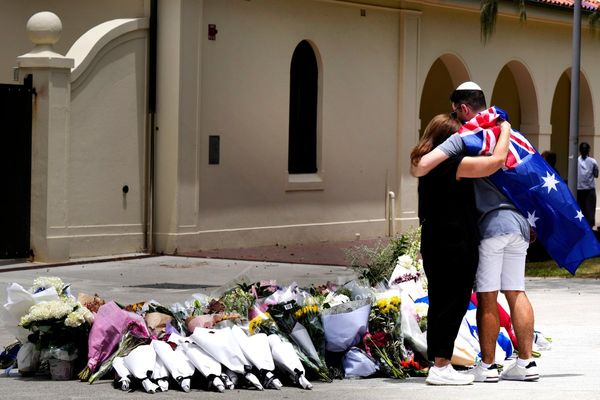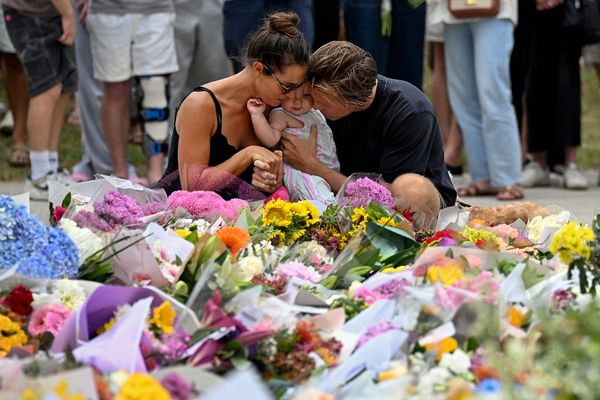
In the weeks after deadly wildfires tore through Maui, Dr Mālia Purdy thought often of a Hawaiian proverb she learned as a child.
E Malama ‘oe I ka ‘Āina, e Malama ka ‘Āina ia ‘oe.
“Take care of the land, and it will take care of you,” said Purdy, executive director of Papa Ola Lokahi, a Native Hawaiian healthcare non-profit. “It basically means the health of the land and the health of the people are the same, you can’t separate the two.”
With water advisories still in effect across Maui, Purdy is worried. The August fires were the latest in a long history of blows to the wellbeing of Maui’s environment and its people, especially Indigenous Hawiians and Pacific Islanders.
“We are a part of the land, and the land is part of us,” said Carol Lee Kamekona, board member of Maui Tomorrow, an environmental protection non-profit on the island.
Every other day since the disaster, Kamekona drives 20 miles from her home in central Maui to Lahaina, the epicenter of the fires. She transports donated resources like water, canned foods and toilet paper to a community-led distribution hub that serves hundreds of displaced fire survivors each day.
As Indigenous Hawaiians like Purdy and Kamekona help lead recovery efforts across the island, they hope Maui will be rebuilt as a place that better protects its environment and people, returning to a way of life that more closely resembles Hawaii before US annexation. Faced with uneven support for state and federal officials, there is a renewed sense of urgency to re-establish Indigenous traditions and leadership of Hawaii, so that islanders can begin restoring the connection between the land and its inhabitants.
“You have to understand, that connection has been jeopardized for over a hundred years,” she said. “The fires have made that disconnect worse, but it is not a new thing that just happened all of a sudden.”
Kamekona said the fires only magnified the problems that have plagued her and other kānaka ʻōiwi – native Hawaiians – in the century since the American seizure of Hawaii.
Before Westerners arrived on its shores, Hawaii was a sovereign kingdom with its capital in the now-incinerated town of Lahaina. The Kingdom of Hawaii enjoyed a self-sufficient system of agriculture and fishing, with strict rules against overfishing in an effort to conserve the ocean’s resources.
Today’s oceans have suffered from the loss of traditional Hawaiian conservation practices. A 2017 study found that important food fish species have declined by more than 75% across the populated Hawaiian Islands.
“This connection between a people and their land is so inherent to the health of the community,” said Kekoa Taparra, an oncologist and medical researcher at Stanford University.
The link between public health and the environment is recognized by the Centers for Disease Control and the World Health Organization. Climate change contributed to the sharp rise of diseases that jump between humans and other animals, such as Covid-19 and Ebola.
“Indigenous people have known that all along, the connection between a people and the environment is a part of our knowledge as Indigenous Hawaiians,” Taparra said. “But I think people who are used to the western lens, they are still wrapping their minds around that.”
The wildfire that claimed the lives of 97 people is itself a consequence of the western mismanagement of Maui’s environmental resources. A July 2021 report on wildfire prevention by a Maui government commission warned that invasive grass species – introduced to the island by European ranchers in the late 18th century – made Hawaii more vulnerable to destructive fires.
“The long-term physical health effects on survivors and first responders of smoke inhalation and burn injuries, as well as exposure to toxic debris and chemicals, have yet to be quantified,” according to a recent paper that Taparra and Purdy helped author for the New England Journal of Medicine.
As the survivors of the Maui fires steel themselves against future climate disasters, the environmental damage of the August wildfires will continue to wreak havoc on the health of the islanders.
The contaminants from the fires is expected to severely damage the coral reefs off Maui’s coastline. Home to native fish populations, the reefs are closely tied to sustenance on Maui and nearby islands.
It’s a stark reminder of the lesson that Purdy learned as a child: the health of the land and the health of its people are inexorably linked. She worries that the fires will take an incalculable toll on the mental and emotional wellbeing of Maui residents, especially Indigenous Hawaiians.
“Can you imagine, to have farmed this land for generations, then the fires just wipe everything out?” said Purdy. “I don’t know what’s going to happen to mental health on Maui.”
Some indigenous Hawaiians say the mental health consequences of the fires will be worsened by Hawaii Governor Josh Green’s plan to reopen West Maui to tourism this weekend. The decision was decried by hundreds of longtime Lahaina residents, who said locals had neither the time nor the resources to grieve over everything that was lost in the fires.
Kamekona was disappointed, but not surprised, by the governor seemingly prioritizing tourists over local residents.
“This is an opportunity to rebuild,” she said. “But for whom is the question.”







